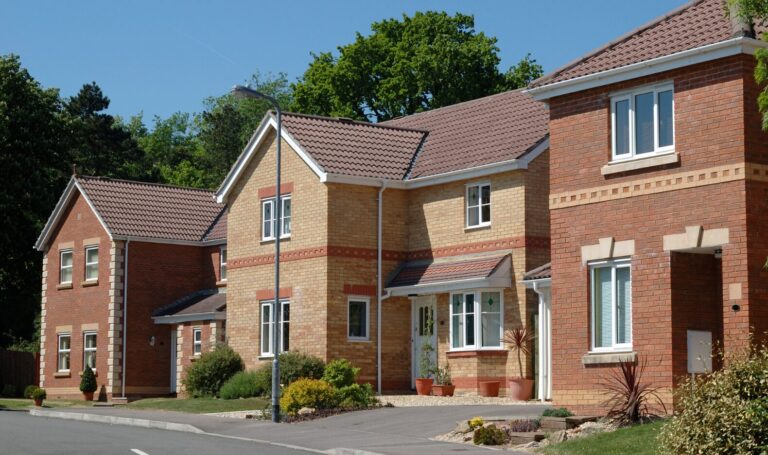For first-time buyers with small deposits, 95% mortgages are often their only way on to the first step of the property ladder.
But high loan-to-value mortgages such as these have been difficult to find since the pandemic washed up on UK shores – with many lenders pulling their 95% and even 90% loans from the market due to the impact of Covid-19.
Fast forward to March 2021, however, and the government revealed a new mortgage guarantee scheme aimed at encouraging lenders to offer more 95% property loans. The scheme is now open and will run until December 2022, but how does it work and how will it help you as a first-time buyer? We’ll explain everything you need to know here…
Can I get a mortgage with a 5% deposit?
The minimum deposit generally required by lenders is 5% – meaning the other 95% of your property’s purchase price will require a mortgage.
Not all lenders offer 95% mortgages, but the government hopes its guarantee scheme will encourage more to do so and help first-time buyers buy their own property.
5% deposit mortgages for first-time buyers: How does the scheme work?
The 95% mortgage guarantee scheme was unveiled during the spring Budget to convince more lenders to offer mortgages to buyers with just a 5% deposit.
For buyers, the mortgages on offer under the scheme will, at face value, appear no different to any other 95% mortgage.
But the lenders themselves will see a portion of each loan they offer under the scheme guaranteed by the government – meaning if a buyer were to default on their repayments or their home was repossessed, the lender would be compensated for some of their losses.
Am I eligible for the 95% mortgage scheme?
Mortgages under the 95% guarantee scheme are open to both first-time buyers and those who already own a home or have done in the past.
To be eligible for one of the mortgages, however, you must:
• Be buying a property for no more than £600,000
• Be buying a property to use as a main residence, and not a buy-to-let or second home
• Take out a repayment mortgage rather than an interest-only one
• Have a deposit of between 5% and 9% of your property’s purchase price
• Pass your lender’s standard affordability tests and lending criteria
What kind of mortgage can I get with a 5% deposit?
All lenders offering 95% mortgages under the guarantee scheme must provide a five-year fixed rate option for buyers – giving them the security of fixed repayments for that period of time. As well as fixed rate loans, lenders could also offer other mortgages under the scheme:
Discount rate mortgages
These mortgages are offered on a rate that is discounted from the lender’s own standard variable rate (SVR).
So, if your lender is offering a 2% discounted rate mortgage and their SVR is 4.5%, you’ll pay 2.5% interest on your mortgage.
If your lender’s SVR changes, your interest rate changes with it, so if the SVR drops, your repayments will drop and if it rises, you’ll pay more.
Tracker mortgages
Trackers work in a similar way to discounted rate mortgages, but they sit above the Bank of England’s base interest rate by a certain percentage and ‘track’ it when it goes up or down. For example, the current base rate is 0.1% so if your tracker mortgage is labelled BEBR + 2.15%, the interest rate you’d pay would be 2.25%.
However, if the Bank’s base rate rose to 1%, for example, the interest rate you’d pay would rise to 3.15%.
Things to consider when taking out a 95% mortgage
Taking out a large mortgage against your property is not a decision to be taken lightly and the higher your mortgage against the value of your property, the more ‘highly geared’ you are. This means if property prices fall, you could have a home that is worth less than the mortgage secured on it, which is also referred to as ‘negative equity’.
Large loan-to-value (LTV) mortgages also usually come with higher interest rates compared with lower LTV mortgages, meaning you’ll pay more each month in repayments.
What banks offer 5% deposit mortgages?
A number of banks and lenders have signed up to the 95% mortgage guarantee scheme and are offering 5% deposit loans. They include:
• Barclays
• NatWest
• HSBC
• Santander
• Lloyds
Other lenders are expected to join them between now and when the scheme ends in December 2022.
How much do I need to save as a deposit?
The deposit you’ll need to save to be eligible for a 95% mortgage under the scheme will be the equivalent of 5% of your property’s purchase price.
The average price of a property for a first-time buyer here in the South West is £219,133, meaning you’d need to save £10,956 as a deposit.
With those figures, your 95% mortgage would be £208,177 and if your lender based the amount you could borrow on a standard 4.5 x income multiple, you’d need an annual household income of £46,261.
Is it better to have a bigger deposit?
While the likely increase in the number of 95% mortgages available will give first-time buyers more options, if you are able to save a larger deposit, there are benefits to doing so:
• You’ll be borrowing less on your mortgage, meaning your monthly repayments will be lower
• You should have more mortgage products to choose from and lower interest rates
• You’ll have more equity in your property, meaning if prices fall, you’re less likely to fall into negative equity
However, saving a deposit takes time and if property prices rise while you save, you may be no better off than if you’d purchased your home with a 95% mortgage earlier. When applying for any mortgage, it’s always key to seek independent financial advice.
Further reading…
As well as your mortgage and deposit, there are a whole host of other costs to consider when buying a home – we’ve outlined these in our handy guide.
And if you’re unsure if buying is the right step for you to take, we’ve listed the pros and cons of purchasing a property compared with renting one.





